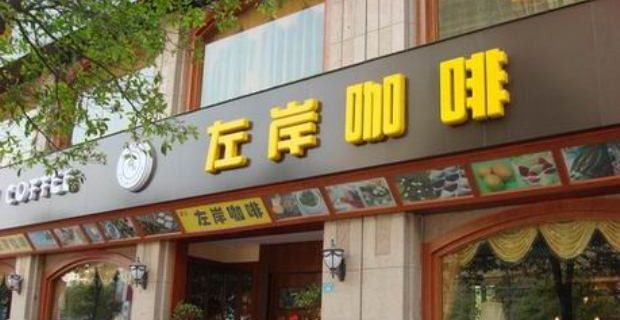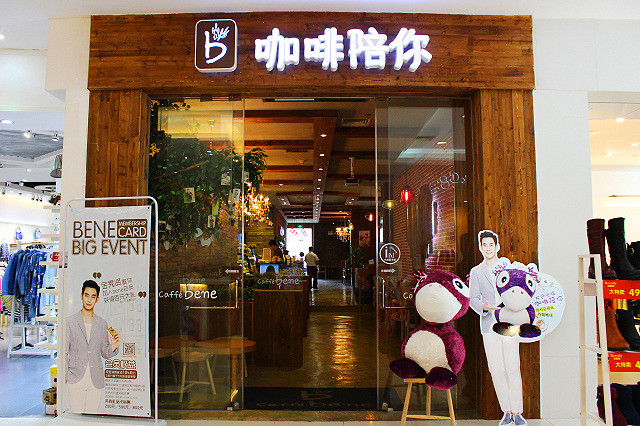The brand story of the Left Bank Cafe
When the left bank began to become an adjective
We all love the left Bank Cafe.

In the 19th century, the Seine-Marne River in Paris, France, meanders westward through the center of Paris. The north of the river is called the right bank, and the south is called the left bank. Paris, France, in the 19th century, was filled with a new atmosphere, a fresh temperament that abandoned the court glitz of the past and began to belong to thought.
The riverbank has always been the place most likely to be tainted with the contemporary atmosphere; as a result, it has begun to become novel. The right bank of the river is the prosperous temperament of the emerging commerce, and the left bank of the river is the humanistic trend of thought rich in art.
There were many cafes on the left bank of the river at that time. There are gentle owners in the cafe, and gray hair permeates the pride of owning a cafe. He stood affectionately behind the bar and greeted the regular guests who came in; there were busy waiters, long fingers holding carved silver plates, two cups of Espresso, skillfully and gracefully shuttling between seats, and white aprons with faint coffee stains and anonymous sketches. Of course, there will be passers-by who come and go: he is Saudi, and a woman named Simon Bova is brewing existentialism and love in a cafe; he is Leonardo da Vinci, facing the smile of Mona Lisa. He tasted a cup of coffee with sugar in his mouth and eyes; he is Shelley, chasing love, tired, sitting in the cafe to rest. He is Hemingway, sitting at the bright table by the window, writing "I look like the rising sun and shining on the king" and his mood; he is Voltaire, who is tasting his thirty-ninth cup of coffee today, and lists the 20th unreasonable reason for the French royal family.
In the cafe on the left bank of the Sena-Marne River, it is so busy that countless him and her, the interlaced time and space of thoughts, have enriched the whole river bank, and even those cafes have become individualized because of these literati. Whether it is the flower god on the road to freedom, the historical Bocoper, or the dome where Hemingway once stood, they transcend the architecture itself and evolve into metaphysical cultural consciousness.
The left bank like this has been in France for two hundred years, and the cafe has been handed down for several generations.
The cafes on the left bank represent a deep humanistic temperament. In the cafe, you face yourself to enjoy the Qingming Festival brought by loneliness. You also read art and life. Parisians drink coffee and taste pleasures other than material things.
It has also become a fashion.
This popularity makes it fashionable to drink coffee, and it also implies that people who want to find a gap in their hearts from coffee will satisfy the gap between spirit and self. Coffee is a substantial body, but the hidden spirit of coffee is invisible, but sonorous and powerful.
A simple cup of coffee does not need to be expensive or fastidious, but it must have an atmosphere of humanistic temperament and a mark of literature and art. It can be a cup of left Bank Cafe with simple form but far-reaching connotation; a cup of humanistic coffee that you can enjoy in the office at three o'clock in the afternoon is not only sensory, but also goes deeper into the cerebral cortex.
The birth of the left Bank Cafe brand is due to this desire for humanistic thoughts to promote the convergence of humanistic spirit not limited to a cafe but from the whole left bank of the Seine. The rich intensity of ideas and art spread along the left bank of the river and became an irreplaceable adjective; an adjective representing abundant humanistic thought.
As a cup of coffee with humanistic characteristics, the left Bank Cafe has pure and persistent perfection for the coffee itself; for the artistic conception of coffee, there are philosophers' thinking. those who earnestly seek truth and give romantic taste like its artistic conception to pursue its French texture. Standing in the row of the freezer shows that the transoceanic temperament is different from the canned conservative style. Its pure materials are closer to the original taste of fresh cooking and satisfy a group of people who have requirements for beverages.
On the left bank, the dedication of running a coffee shop is not just about a cup of coffee. What should be in the cafe is also gradually realized: from latte, Onlie coffee, Onlie milk tea, Caberasso to dessert series and personalized goods, the blurred image of the left Bank Cafe in consumers' minds is beginning to become real.
For a cup of coffee, the left Bank Cafe pours not only 250 grams of black liquid, but also a respect for humanistic ideas that has existed in modern times. What we cherish in the left Bank Cafe that we want to bring to every consumer is a literary dream. What is hidden in the coffee cup is a strong artistic temperament. As a result, the left bank began to become an adjective, spread among the community, and we are all deeply infatuated with the left bank cafe.
Important Notice :
前街咖啡 FrontStreet Coffee has moved to new addredd:
FrontStreet Coffee Address: 315,Donghua East Road,GuangZhou
Tel:020 38364473
- Prev

On the Industry Enlightenment brought by the closure of "Coffee with you"
In the recent period of time, the biggest news in the field of domestic chain franchise is the number of well-known coffee brands that have gone out of business one after another. Many people did not expect that the once amazing expansion momentum of the brand, which once aimed at breaking thousands of stores in 2015 and planning to launch a new third board, had fallen into such a declining situation almost overnight. Besides,
- Next

The real pot coffee brand story brings the coffee to the mainland.
Real pot coffee Jianwai SOHO store has become the 73rd store in China and the 847th branch in the world. Would you like a cup of hot coffee? Of course, you can give yourself many reasons not to drink coffee, such as the taste is too bitter, the price is too high, a waste of time, etc., but this does not prevent a Taiwan veteran from opening one coffee shop after another under your nose. These cafes look the same: Ming
Related
- What brand of black coffee is the most authentic and delicious? what are the characteristics of the flavor of the authentic Rose Summer Black Coffee?
- Introduction to the principle and characteristics of the correct use of mocha pot A detailed course of mocha pot brewing coffee is described in five steps.
- Which is better, decaf or regular coffee? how is decaf made?
- How much is a bag of four cat coffee?
- How about four Cat Coffee or Nestle Coffee? why is it a cheap scam?
- Which is better, Yunnan four Cats Coffee or Nestle Coffee? How about cat coffee? is it a fake scam? why is it so cheap?
- How about Cat Coffee? what grade is a hoax? which instant coffee tastes better, four Cat Coffee, Nestle Coffee or G7 coffee?
- Process flow chart of coffee making-Starbucks coffee making process what coffee tastes good at Starbucks
- The top ten best coffee beans in the world Rose summer coffee or Tanzanian coffee tastes good
- Yunnan four cat coffee is good to drink?_four cat coffee is a big brand? four cat blue mountain coffee is fake?

